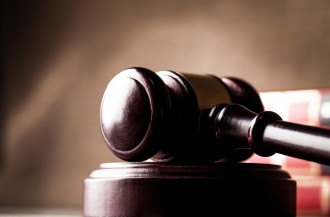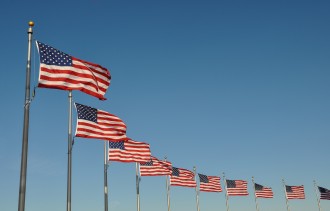
January 8, 2018
Director’s Time-Bar Determinations under § 315(b) are not Exempt from Judicial Review
In Wi-Fi One, LLC v. Broadcom Corp., [2015-1945, 2015-1946] (January 8, 2018) the Federal Circuit, en banc, held that the bar on judicial review of institution decisions in 35 U.S.C. §314(d) does not apply to time-bar determinations made under § 315(b), overruling Achates Reference Publishing, Inc. v. Apple Inc., 803 F.3d 652, 658 (Fed. Cir. 2015).
Wi-Fi argued that the Director lacked authority to institute IPRs under §315(b) because petitioner Broadcom was in privity with the defendants that the prior owner of the patents (Ericsson) served with an infringement complaint more than a year before Broadcom filed the IPRs. The Board nonetheless instituted the IPRs, finding that Wi-Fi had not shown that Broadcom was in privity with the defendants in the prior litigation. In its Final Written Decision, the challenged claims were found unpatentable.
Wi-Fi appealed the Final Written Decisions, asking the Federal Circuit to reverse or vacate the Board’s time-bar determinations, but a panel of the Federal Circuit found the §315(b) time-bar rulings nonappealable under Achates. Wi-Fi petitioned for rehearing en banc, asking the Federal Circuit to consider whether Achates should be overruled, and hold that the Director’s § 315(b) time-bar determinations are subject to judicial review.
The majority started its analysis with the the “strong presumption” favoring judicial review of administrative actions, including the Director’s IPR institution decisions. In view of this strong presumption, the Federal Circuit said it would abdicate judicial review only when Congress provides a “clear and convincing” indication that it intends to prohibit review. The Federal Circuit found no clear and convincing indication in the specific statutory language in the AIA, the specific legislative history of the AIA, or the statutory scheme as a whole that demonstrates Congress’s intent to bar judicial review of § 315(b) time-bar determinations.
The Federal Circuit said that §315(b), which controls the Director’s authority to institute IPR that is unrelated to the Director’s preliminary patentability assessment or the Director’s discretion not to initiate an IPR even if the threshold “reasonable likelihood” is present. Because §314(a) does not mention the time-bar, the PTO’s position that the time-bar determination is unreviewable runs counter to the principle, as reflected in Cuozzo, that favors reading the statute to comport with, not depart from, familiar approaches to comparable issues. The majority found this reading was consistent with the overall statutory scheme as understood through the lens of Cuozzo’s directive to examine the statutory scheme in terms of what is “closely related” to the § 314(a) determination.
The Federal Circuit concluded that whether a petitioner has complied with §315(b) has nothing to do with the patentability merits or discretion not to institute. Thus, the majority said that the statutory scheme as a whole demonstrates that § 315 is not “closely related” to the institution decision addressed in § 314(a), and it therefore is not subject to §314(d)’s bar on judicial review.
Moreover, the Federal Circuit observed that timely filing of a petition under § 315(b) is a condition precedent to the Director’s authority to act, and said that enforcing statutory limits on an agency’s authority to act is precisely the type of issue that courts have historically reviewed.
The Federal Circuit said that the Supreme Court in Cuozzo instructed that the “strong presumption” favoring judicial review “may be overcome by ‘“clear and convincing”’ indications, drawn from ‘specific language,’ ‘specific legislative history,’ and ‘inferences of intent drawn from the statutory scheme as a whole,’ that Congress intended to bar review.” However, finding no such clear and convincing indications, the Federal Circuit held that the Director’s time-bar determinations under §315(b) are not exempt from judicial review, and overruled Achates’s contrary conclusion.




































